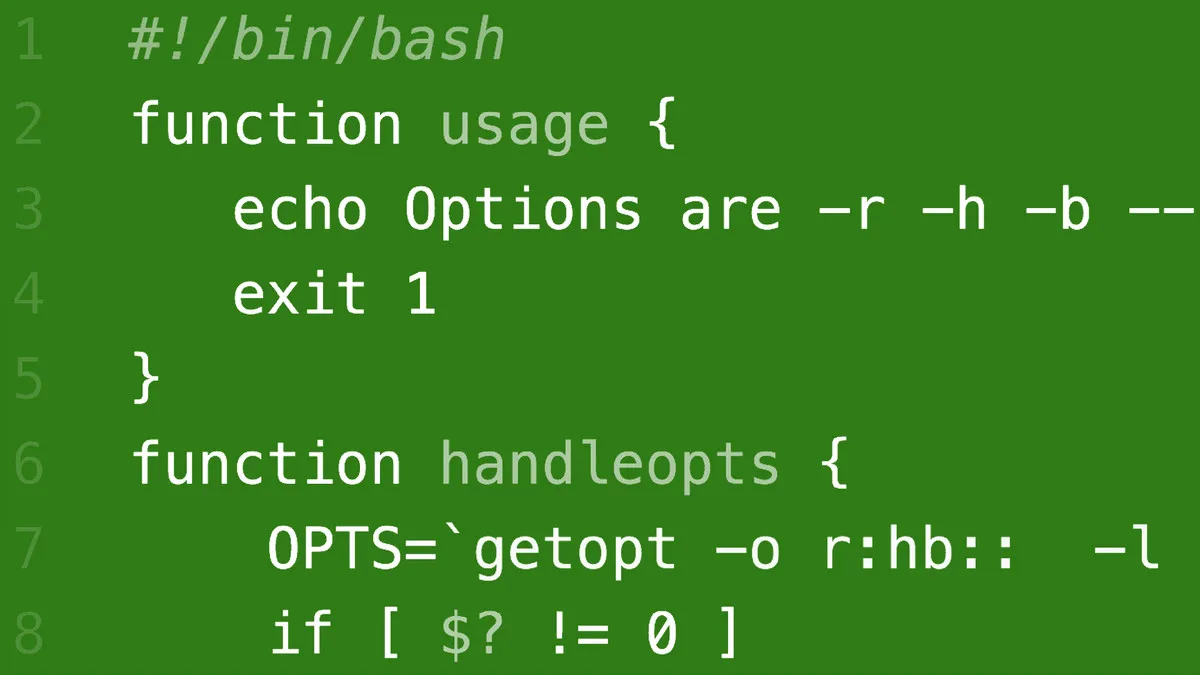
Linux: Bash Shell and Scripts 
This course provides an introduction to Linux bash scripting, including how to read and write scripts, use local variables, functions, loops, and coprocesses, and apply sed and AWK. Gain the skills to create powerful scripts and automate tasks. ▼
ADVERTISEMENT
Course Feature
![]() Cost:
Cost:
Free Trial
![]() Provider:
Provider:
LinkedIn Learning
![]() Certificate:
Certificate:
No Information
![]() Language:
Language:
English
![]() Start Date:
Start Date:
Self Paced
Course Overview
❗The content presented here is sourced directly from LinkedIn Learning platform. For comprehensive course details, including enrollment information, simply click on the 'Go to class' link on our website.
Updated in [March 06th, 2023]
(Please note the following content is from the official provider.)
Learn about the bash environment, local variables, functions, loops, case statements, string operations, and coprocesses.
Learn how to use the text processing utilities sed and AWK to read and edit data in text files.
The topics covered in this course are vital for Linux administration, and required for many Linux certifications.
(Please note that we obtained the following content based on information that users may want to know, such as skills, applicable scenarios, future development, etc., combined with AI tools, and have been manually reviewed)
This course, Linux: Bash Shell and Scripts, provides an overview of the bash environment, local variables, functions, loops, case statements, string operations, and coprocesses. It also covers the use of text processing utilities sed and AWK to read and edit data in text files. These topics are essential for Linux administration and are required for many Linux certifications. Upon completion of this course, students will have a better understanding of the bash environment and be able to use text processing utilities to read and edit data in text files.
[Applications]
After completing this course, students should be able to apply their knowledge of the bash environment, local variables, functions, loops, case statements, string operations, and coprocesses to Linux administration tasks. They should also be able to use the text processing utilities sed and AWK to read and edit data in text files. Additionally, students should be prepared to take Linux certifications that require knowledge of the topics covered in this course.
[Career Paths]
1. Linux System Administrator: Linux System Administrators are responsible for the installation, configuration, and maintenance of Linux systems. They must be knowledgeable in the Linux operating system, scripting languages, and system security. As the demand for Linux systems increases, so does the demand for Linux System Administrators.
2. Linux Network Engineer: Linux Network Engineers are responsible for the design, implementation, and maintenance of Linux-based networks. They must be knowledgeable in networking protocols, routing, and switching, as well as Linux system administration. With the increasing popularity of Linux-based networks, the demand for Linux Network Engineers is growing.
3. Linux Security Engineer: Linux Security Engineers are responsible for the security of Linux systems and networks. They must be knowledgeable in system security, network security, and Linux system administration. As the need for secure Linux systems and networks increases, so does the demand for Linux Security Engineers.
4. Linux Developer: Linux Developers are responsible for developing applications and software for Linux systems. They must be knowledgeable in programming languages, Linux system administration, and software development. With the increasing popularity of Linux systems, the demand for Linux Developers is growing.
[Education Paths]
1. Bachelor of Science in Computer Science: This degree path provides a comprehensive overview of computer science, including topics such as programming, software engineering, operating systems, and computer networks. It also covers topics related to Linux, such as bash scripting, system administration, and security. This degree path is becoming increasingly popular as more organizations are relying on Linux for their IT infrastructure.
2. Bachelor of Science in Information Technology: This degree path focuses on the application of technology to solve business problems. It covers topics such as database management, web development, and network security. It also covers topics related to Linux, such as bash scripting, system administration, and security. This degree path is becoming increasingly popular as more organizations are relying on Linux for their IT infrastructure.
3. Master of Science in Computer Science: This degree path provides a more in-depth look at computer science, including topics such as artificial intelligence, machine learning, and distributed systems. It also covers topics related to Linux, such as bash scripting, system administration, and security. This degree path is becoming increasingly popular as more organizations are relying on Linux for their IT infrastructure.
4. Master of Science in Information Technology: This degree path focuses on the application of technology to solve business problems. It covers topics such as database management, web development, and network security. It also covers topics related to Linux, such as bash scripting, system administration, and security. This degree path is becoming increasingly popular as more organizations are relying on Linux for their IT infrastructure.
Course Syllabus
Introduction
What you should know
Using the exercise files
Course Provider

Provider LinkedIn Learning's Stats at AZClass
Discussion and Reviews
0.0 (Based on 0 reviews)
Explore Similar Online Courses

GetX flutter 28 latest 2021

Business Cyber Security Course

Python for Informatics: Exploring Information

Social Network Analysis

Introduction to Systematic Review and Meta-Analysis

The Analytics Edge

DCO042 - Python For Informatics

Causal Diagrams: Draw Your Assumptions Before Your Conclusions

Whole genome sequencing of bacterial genomes - tools and applications

Introduction to Linux : Full Course for Beginners

The 50 Most Popular Linux & Terminal Commands - Full Course for Beginners

Linux Fundamentals
 Related Categories
Related Categories
 Popular Providers
Popular Providers
 Popular Searches
Popular Searches
Quiz
 Submitted Sucessfully
Submitted Sucessfully
1. What is the Bash environment?
2. What is sed used for?
3. What is AWK used for?
4. Which of the following is a requirement for many Linux certifications?


Start your review of Linux: Bash Shell and Scripts